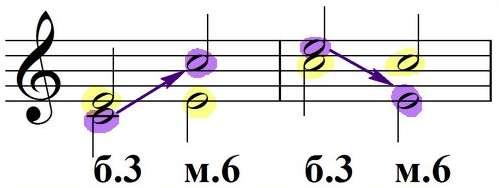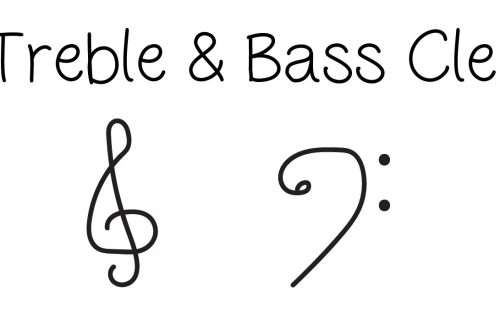
Interval inversion
In the interval, 2 sounds are distinguished, the lower one is called the base, and the upper one is called the top. When the base changes position by a clean step up, or the top moves a clean step down, the intervals are reversed. Only 1 sound is drawn, the second one does not need to be moved. With this operation, a new interval is created, it, along with the original one, creates an octave. But the numerical expression of the sum of both intervals is always equal to 9, because in the reversed intervals 1 sound is read 2 times, since it is included in both intervals.
Inversion of intervals is necessary for intonation of sounds. For a good result, it is necessary to sing the created interval and clearly hit the reversed notes. This procedure improves hearing, allows you to select intervals, chords and solos in music with maximum accuracy. Interval inversions are used when composing music, sometimes it is even imperceptible.
Listen carefully to a piece of romantic melody, and you will understand that it is based on the rising tones of thirds and sixths.
Laws of interval reversal
The interval has two values - quantitative and qualitative. Quantitative indicates the number of steps that are covered by the interval, it is she who affects the name of the interval. The second indicates the amount in the interval of tones and semitones. These figures change during the call.
There are two laws of circulation:
- The first implies that pure intervals do not change, small ones are transformed into large ones, reduced ones into increased ones and vice versa;
- Prims turn into octaves, seconds into sevenths, thirds into sixths, quarts into fifths, and, accordingly, everything is reversed (octaves into prims, etc.).
Once again, clearer:


The inversion is considered complete when the base is moved one step up or the top is moved one step down.
Let’s look at examples
Take the augmented third “do-mi” and perform the inversion. To do this, put the base one step up – from this you will create an interval “mi-do” – a small sixth. After that, perform the inversion in reverse, move the top “mi” down to the step, the small sixth “mi-do” is also obtained.
Now work on reversing the interval “re-la” – move the “re” higher and get “la-re”. You can also move “la” lower and again you get “la-re”. In both the first and second cases, a pure quantum became a pure quart.
Answers on questions
Where is spacing used? This operation is used when creating music. Also, appeals allow you to memorize tritones and understand chords .
Is it possible to handle compound intervals? In order to convert a simple interval into a compound interval, it is necessary to transfer two sounds at the same time.
Conclusion
Please note that when reversing intervals, it is imperative to cross the voices and swap them. Otherwise, a new interval cannot be created. Interval inversion allows you to quickly build large intervals. As you can see, this procedure is not difficult.
To consolidate video material on this topic





